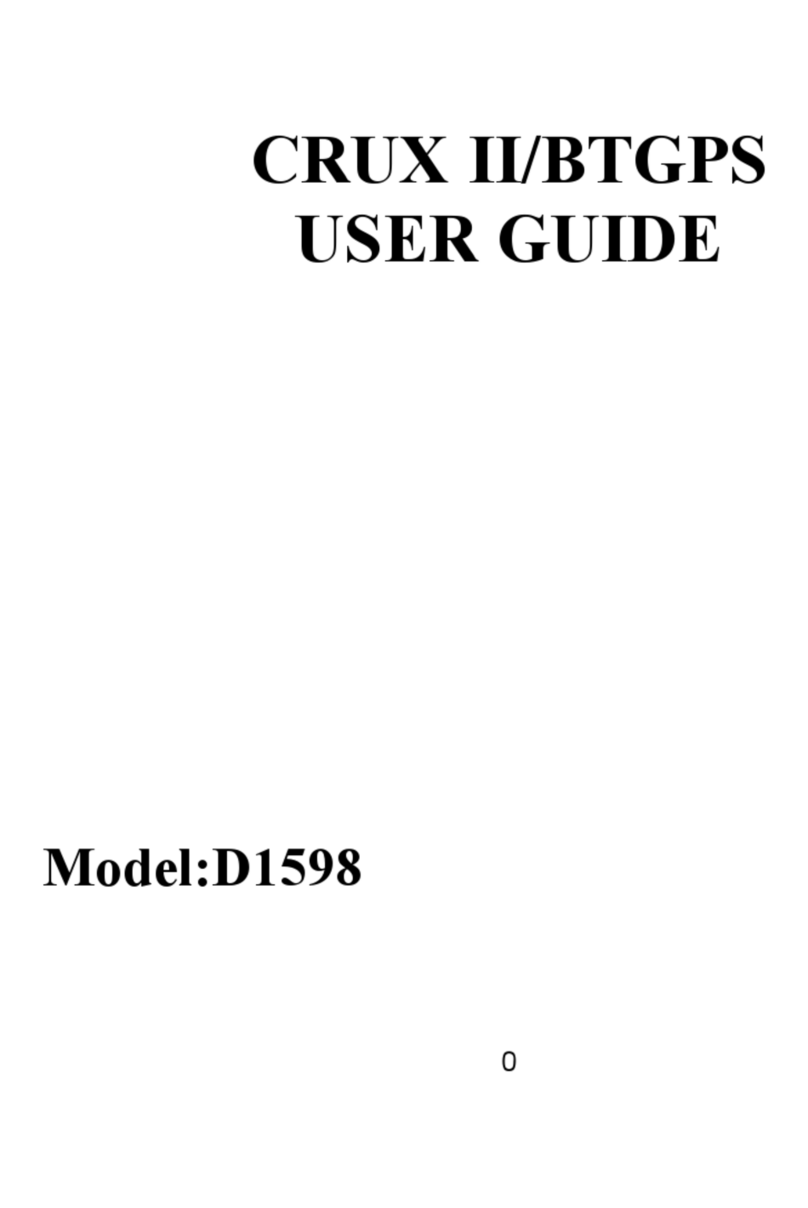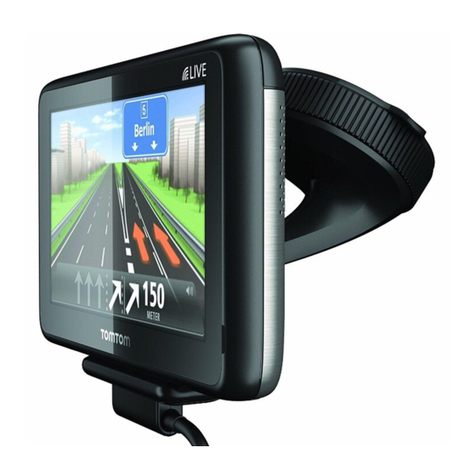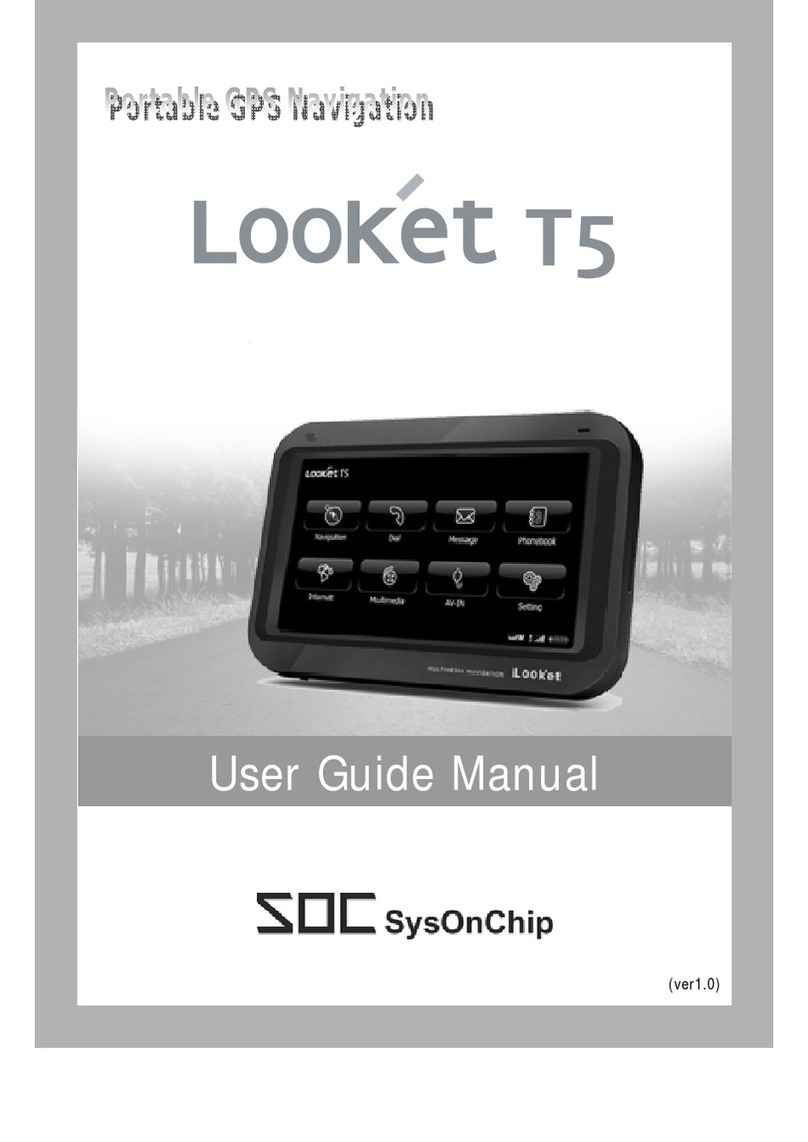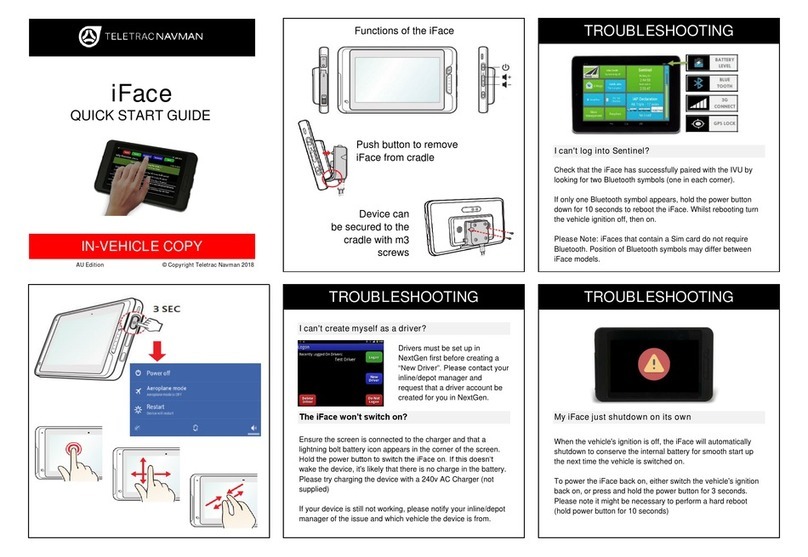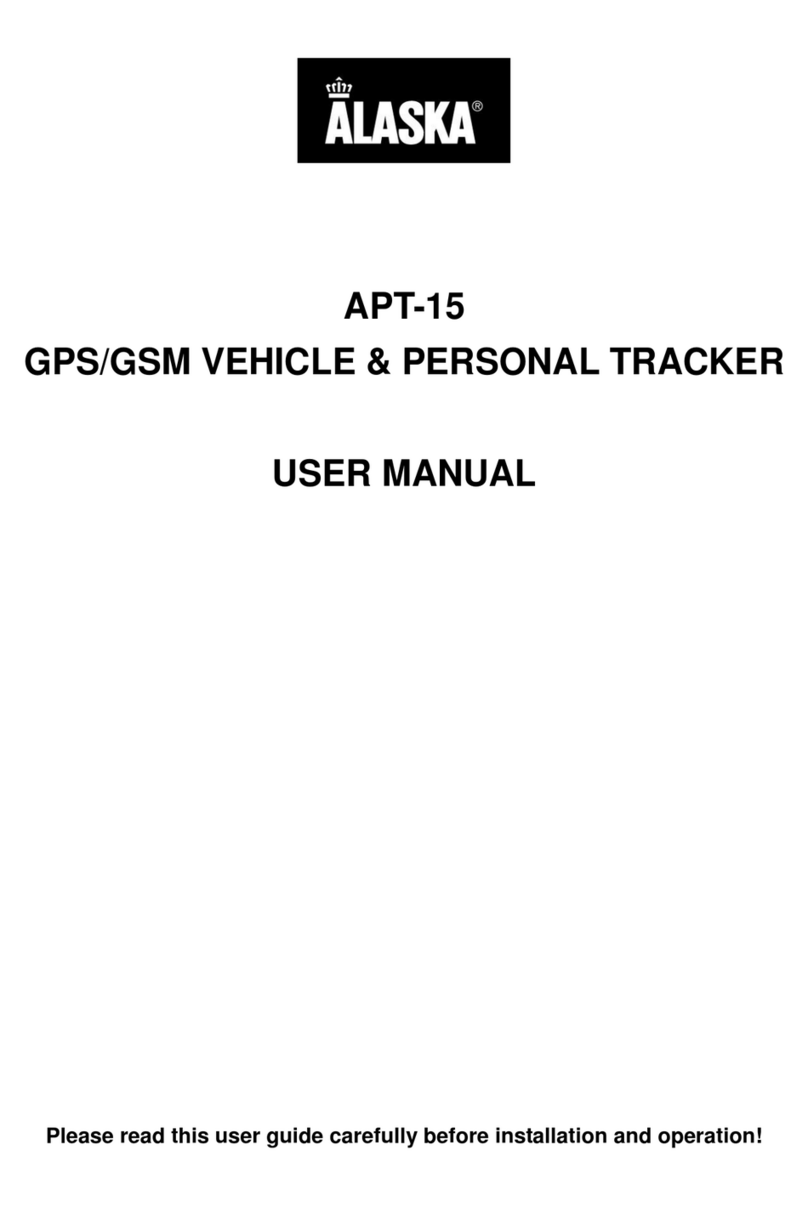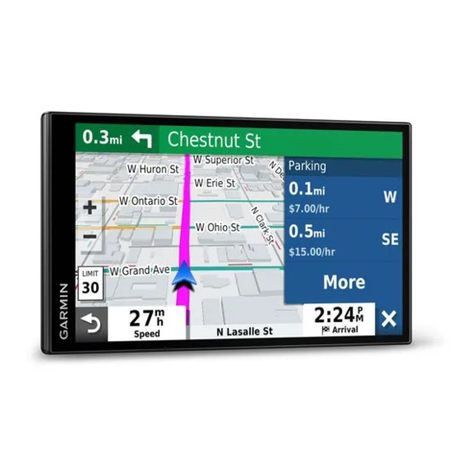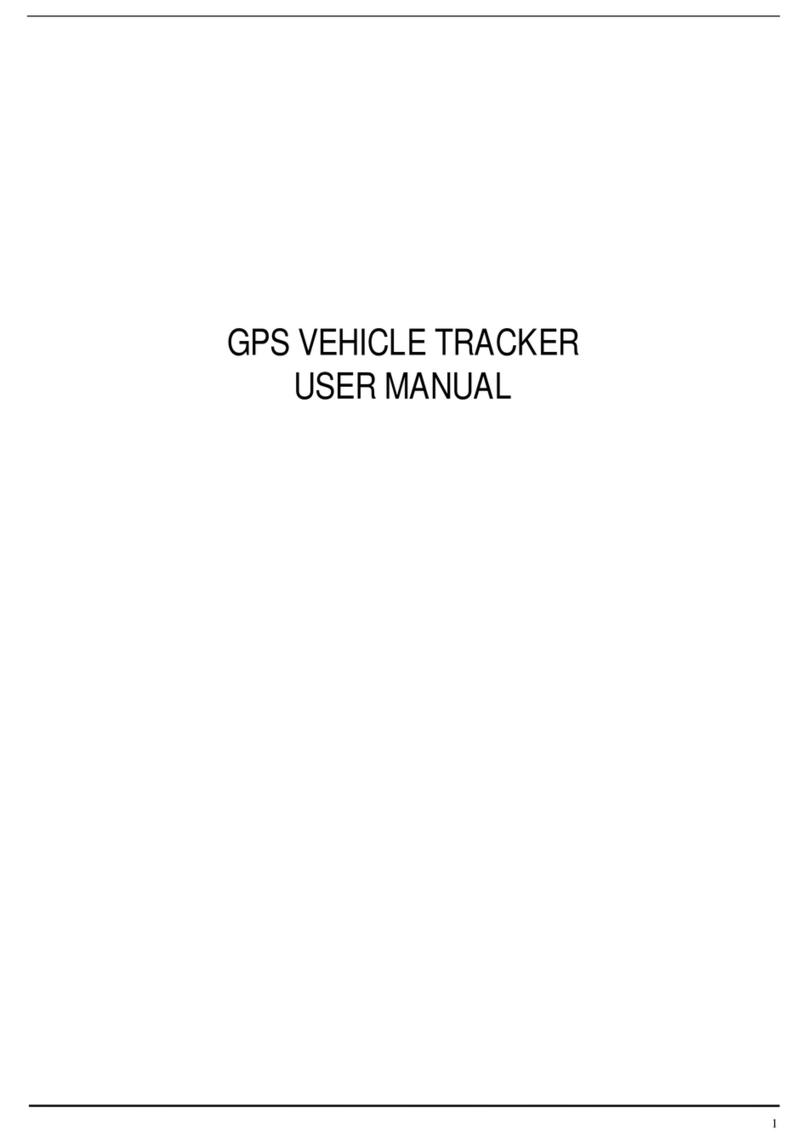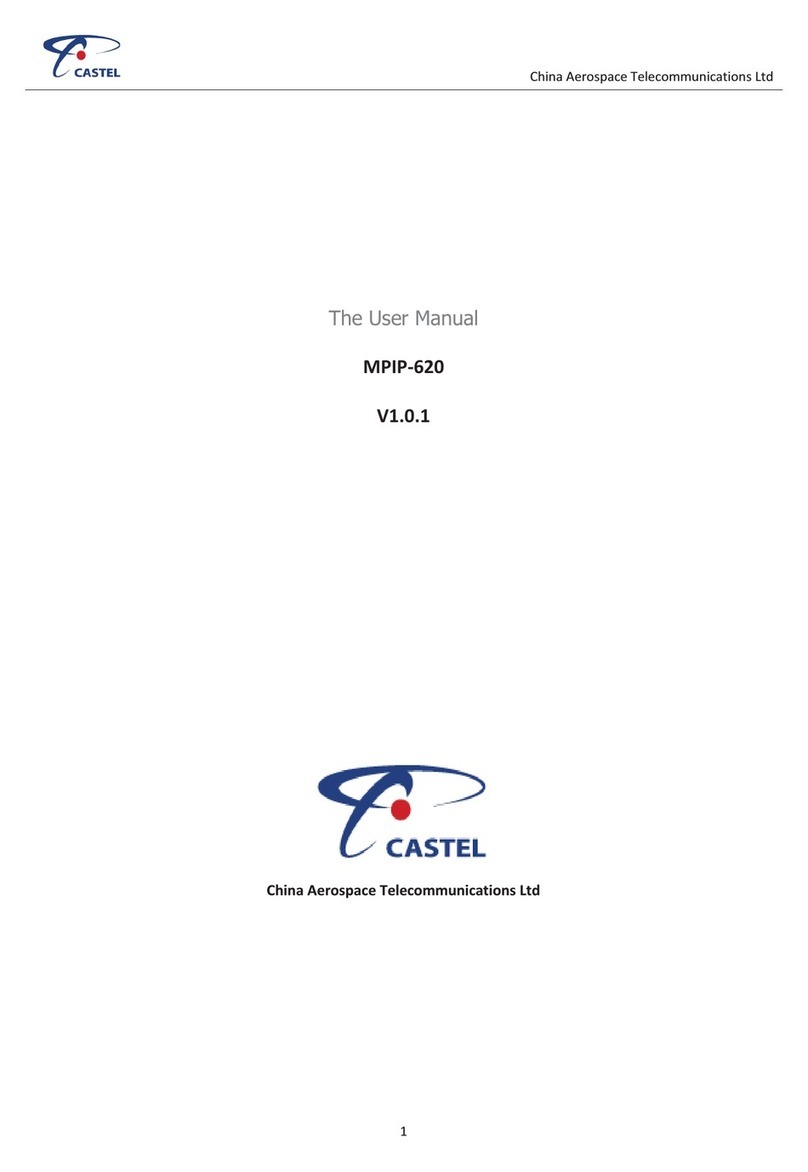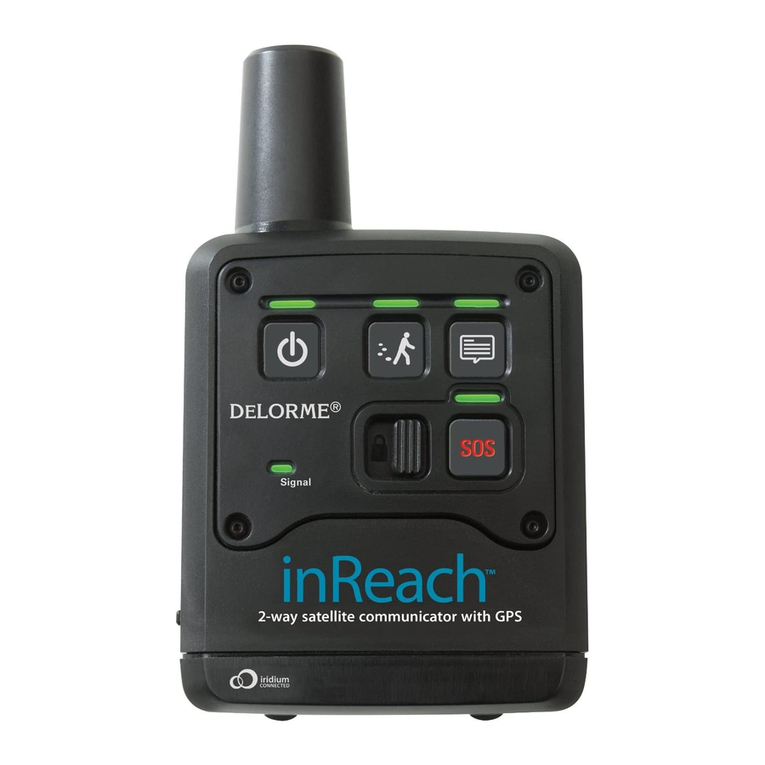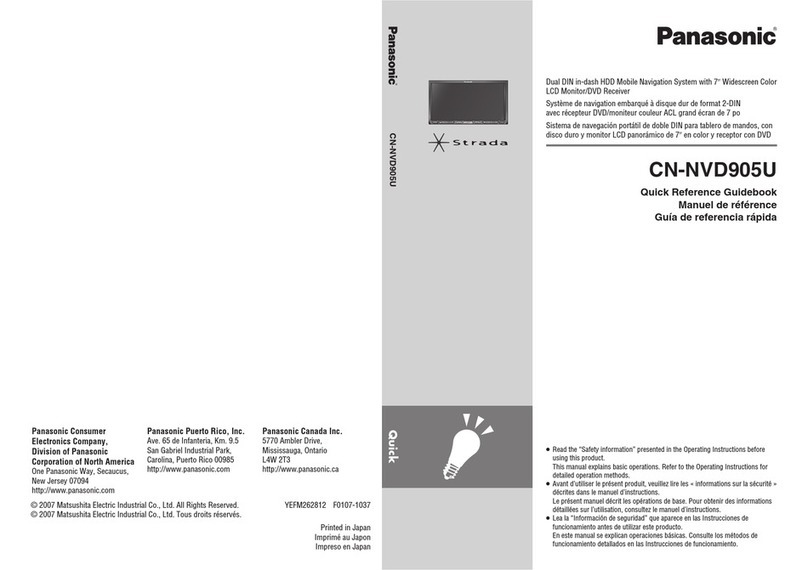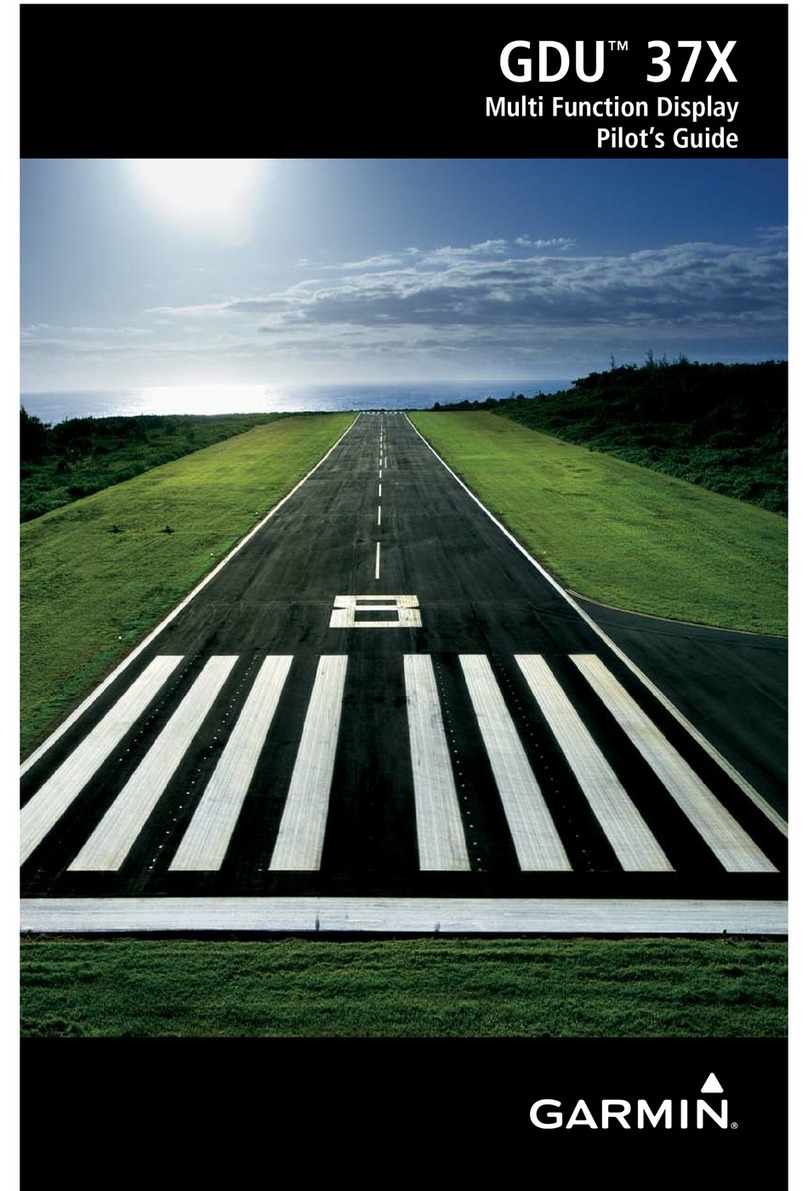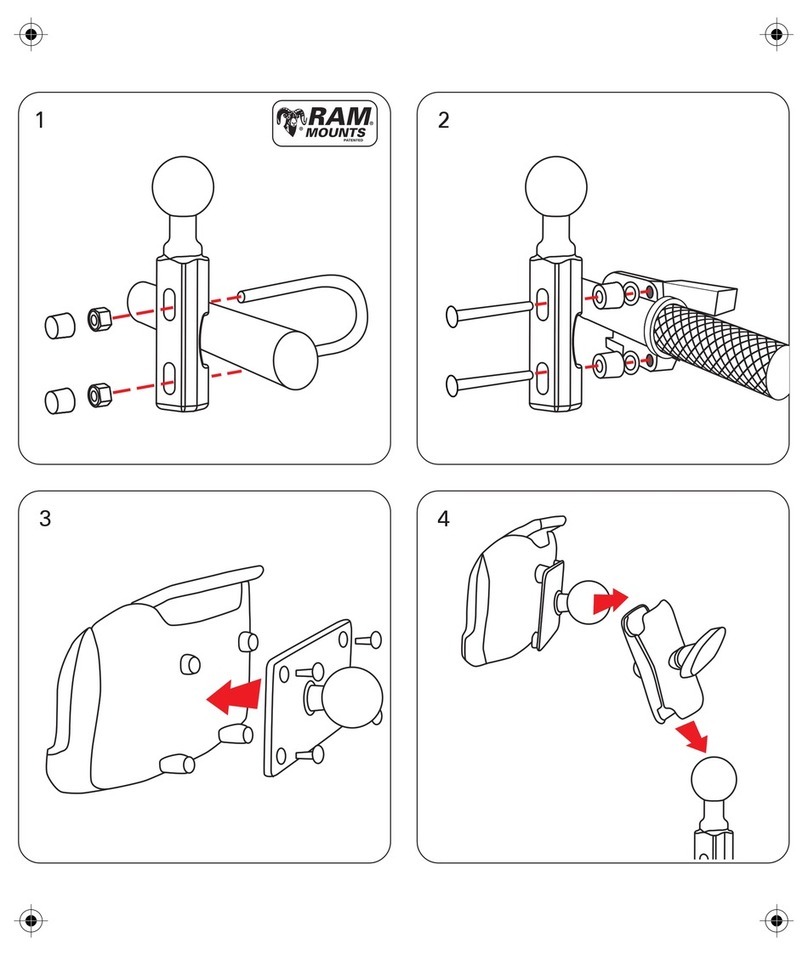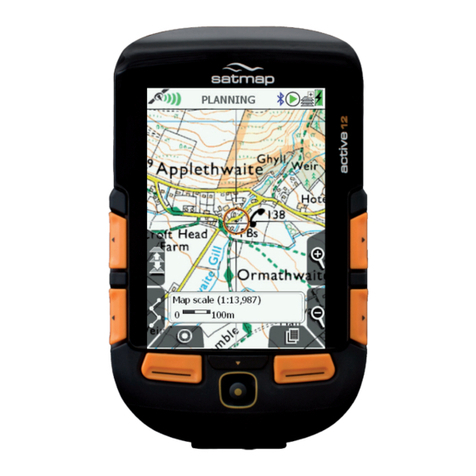EMTAC CRUX II BTGPS User manual

CRUX II / BTGPSTM
GPS Receiver
User Guide
EMTAC

2
Copyright ©EMTAC Technology Corp. 2002. All rights reserved.
Reproduction, transfer, distribution or storage of part or all of the contents in this
document in any form without the prior written permission of EMTAC is prohibited.
The Bluetooth trademarks are owned by Bluetooth SIG, Inc. USA and licensed to
EMTAC Technology Corp.
Other products and company names mentioned herein may be trademarks or
tradenames of their respective owners.
EMTAC reserves the right to make changes and improvements to any of the products
described in this document without prior notice.
Under no circumstances shall EMTAC be responsible for any loss of data or income or
any special, incidental, consequential, or indirect damages howsoever caused.

3
Warnings
Care and Caution
The Global Positioning System (GPS) is operated by the United States
Government which is solely responsible for the accuracy and continued
operation of the system. Accuracy of position fixes (longitude, latitude and
altitude) can be affected by alterations made to the GPS satellites by the U.S.
Government. Accuracy is subject to change in accordance with the U.S.
Department of Defense civil GPS user policy and Federal Radionavigation Plan.
Positional accuracy and time to fix time can also be affected by poor view of
caused by obstructions such as
tall buildings,
heavy foliage,
large cliffs and other obstructions
where GPS satellite signals are blocked and poor satellites geometry conditions
result.
Judgment
CRUXII / BTGPSTM receiver is an excellent navigation and location awareness
assist tool, but does not substitute the needs of careful steering and good
judgment. Never only rely on one single tool or apparatus for positioning and
navigation.
Accessories
The accessory supplied with the CRUX II / BTGPS receiver is specifically designed for
BTGPS. Use of other accessory may severely degrade performance or even damage
the receiver, and will void the warranty. Make sure using the charger by EMTAC. DO
NOT USE OTHER CHARGER. Do not try to open or break the receiver. There is no
service accessory part inside the receiver. Open the receiver will void the
warranty.
Software
Follow the operation guidance as stated and described in the user guide of the
GPS application software.
The software supplied in and with the CRUX II / BTGPS receiver is solely for
personal usage. Making copies only for personal use, but may not copy, modify,
reverse engineer or transfer the software unless expressively provided by
written agreement. The software is the property of EMTAC and/or its supplier

4
and is protected by international treaty provisions.
Safety
THE CRUX II / BTGPS contains Lithium-ion battery inside. Leaving the CRUX II /
BTGPS in hot or cold conditions, such as in a closed car in summer or winter conditions,
will reduce the capacity and lifetime of the battery inside. Always try to keep the CRUX
II / BTGPS between +15°C (+59°F) and +25°C (+77°F). A CRUX II / BTGPS with a
hot or cold battery may temporarily not work, even when the battery is fully charged.
The performance of Lithium-ion batteries is particularly limited in temperatures below
0°C (+32°F). Temperature extremes will affect the ability of your battery to charge:
allow the CRUX II / BTGPS to cool down or warm up first.
Batteries must be recycled or disposed of properly. Batteries must not be disposed of
in municipal waste.
DO NOT DISPOSE OF THE CRUX II / BTGPS RECEIVER IN A FIRE!
Charge the CRUX II / BTGPS only with the charger supplied with. When a charger is
not in use, disconnect it from the power source. Do not leave the CRUX II /BTGPS
connected to a charger for longer than 24 hours, since excessive charging may
shorten its life. If left unused, a fully charged battery will discharge itself over time.
CAUTION
RISK OF EXPLOSION IF BATTERY IS REPLACED
BY AN INCORRECT TYPE.
DISPOSE OF USED BATTERIES ACCORDING
TO THE INSTRUCTIONS.
To assure product safety, the battery maker requests following statements in
the instruction manual/User Guide of the equipment.
Danger
When charging the battery, use dedicated chargers and following the specified
condition.
Use the battery only in the specified equipment.

5
Don’t connect battery directly to an electric outlet or cigarette lighter charger.
Don’t heat or throw battery into a fire.
Don’t use, leave battery close to fire inside of a car where temperature may be
over 60°C. Also don’t charge/discharge in such condition.
Don’t immerse, throw, wet battery in water / seawater.
Don’t put batteries in your pockets or a bag together with metal objects such as
necklaces, hairpins, coins, or screws. Don’t store batteries with such object.
Don’t short circuit the (+) and (-) terminals with other metals.
Don’t place battery in a device with the (+) and (-) in the wrong way around.
Don’t pierce battery with a sharp object such as a needle, etc.
Don’t hit with a hammer, step on a throw or drop to cause strong shock.
Don’t disassemble or modify the battery.
Don’t solder a battery directly.
Don’t use a battery with serious scar or deformation.
Don’t use battery in a corrosion environment (damage from salt water, sea water,
acid, alkali, corrosion gas, etc.).
Warning
Don’t put battery into a microwave oven, dryer, or high-pressure container.
Don’t use battery with dry cells and other primary batteries, or batteries of a
different package, type, or brand.
Stop charging the battery if charging isn’t completed within the specified time.
Stop using the battery if abnormal heat, order, discoloration, deformation, or
abnormal condition is detected during use, charge, or storage.
Keep away from fire immediately when leakage or foul orders are detected.
If liquid leaks onto your skin or cloths, wash well with fresh water immediately.
If liquid leaking from the battery gets into your eyes, don’t rub your eyes.
Wash them well with clean water and go to see a doctor immediately.
Caution
Store batteries out of reach of children so that they are not accidentally swallowed.
Before using the battery, be sure to read the user’s manual and conditions on
handling thoroughly.
Thoroughly read the user’s manual for the charger before charging the battery.
For information on installing and removing from equipment, thoroughly read
user’s manual for the specific equipment.
Batteries have life cycles. If the time that the battery powers equipment becomes
much shorter than usual, the battery life is at an end. Replace the battery with a
new same one.
Remove a battery whose life cycle has expired from equipment immediately.

6
When the battery is thrown away, be sure it is non-conduction by applying vinyl
type to the (+) and (-) terminals.
When not using battery for an expanded period, remove it from the equipment and
store in a place with low humidity and low temperature.
While the battery is charged, used and stored, keep it away from object or
materials with static electric chargers.
If the terminals of the battery become dirty, wipe with a dry cloth before using the
battery.
Notice
In order to help you fulfilling any warranty obligations, read comprehensively the
“Warnings”, “Disclaimer and Limitation of Liability”, “Basic Guidelines”, “Care and
Maintenance”, and the whole User Guide.

7
Disclaimer and Limitation of Liability
EMTAC Technology Corp. and its subsidiaries assume no responsibility for any damage
or loss resulting from the use of this product, software and user guide.
EMTAC and its subsidiaries assume no responsibility for any loss or claims by third
parties which may arise through the use of the software. EMTAC and its subsidiaries
assume no responsibility for any damage or loss caused by deletion of data as a result
of malfunction, dead battery, or repairs. Under no circumstances shall EMTAC and its
subsidiaries are responsible for any loss of data or income or any special, incidental,
consequential or indirect damages howsoever caused.
The contents of this User Guide are provided “as it”. Except as required by applicable
laws, no warranties of any kind, either express or implied, including, but not limited to,
the implied warranties of merchantability and fitness for a particular purpose, are
made in relation to the accuracy, reliability or contents of this user guide. EMTAC
reserves the right to revise this user guide or withdraw it at any time without prior
notice. EMTAC reserves the right to make changes and improvements to any of the
products described in this user guide.

8
Table of contents
BasicGuidelines 9
GettingStart 11
Introduction 11
PreparetouseyourBTGPS 12
GPSsignalreception 12
Usingoptionalexternalactiveantenna 13
CAUTIONANDWARNING 14
GeneralInformation 15
GeneralFeatures 15
AntennaeFaçade 17
PowerSwitch 17
ExternalAntennaPort 18
LEDindicators 18
PowerJack 18
External active antenna (optional) 19
OperationGuide 20
Step 1 To install the GPS/MAP application software 21
Step 2 To pair/connect the BTGPS with the host 22
Step 3 To operate the GPS/MAP application software 24
Step 4 To connect with the external active antenna (optional) 25
IndicationofBTGPSoperation 26
TochargethebatteryoftheBTGPS 27
Troubleshooting 28
CareandMaintenance 29
Glossary 30

9
Basic Guidelines
SAFETY
Read the User Guide and these basic guidelines comprehensively. Breaching the
regulations and rules may be dangerous or illegal. Road safety is the first priority; do
not use or operate the CRUX II / BTGPSTM receiver while driving. Keep the CRUX II /
BTGPS receiver away from high temperatures and fire. Additional detailed information
is given in this user guide.(see mare details in “Warning” section)
PROPER HANDLING
Operating the GPS receiver requires a clear and unobstructed view of sky with the
antenna facade pointing upward to the sky. Do not bend CRUX II / BTGPS receiver
while connected to charger, bending will damage the connector, resulting in damage to
the BTGPS or the charger’s plug.
FIRST TIME OPERATION
A longer than normal time-to-first-fix of position may result the first time you use the
CRUX II / BTGPS. Follow this user guide and consult the instructions of the host
platform and GPS application software.
INTERFERENCE
GPS receivers may receive interference near cellular base-station and when in close
proximity to mobile phone antennas. This interference may affect positioning and
time-to-fix performance.
CONNECTOR and JACK
The CRUX II / BTGPS has one external antenna (port) connector, and one DC power
jack. Caution and care must be exercised when handling these parts. Bending or
breaking these parts will severely degrade positioning performance and damage
the receiver. This will void your warranty.
ACCESSORIES*
Use only manufacturer approved accessories with the CRUX II / BTGPS. No service
part inside the CRUX II / GPS receiver.
SERVICE
Only qualified engineering service personnel must install or repair equipment.
*The external active antenna is an optional accessory which not included in the standard package.

10
SWITCH OFF
Obey all laws, regulations, rules and restrictions. Switch off the host platform and
discontinue operation of the CRUX II / BTGPS receiver in hospital ICU, aircraft,
gasoline station, near fuel or chemical, near blasting area, or other restricted areas.
NOTICE
Read the “Warnings” section comprehensively before operation.

11
1. Getting Start
Introduction
Congratulations on purchasing the CRUX II / BTGPSTM. This GPS receiver is the world
first mobile GPS receiver integrated with Bluetooth technology. The BTGPS offers
flexible and various location awareness applications for both consumer and corporate
usages including
● Navigation and Positioning
●Find Street and Route
● Travel Route Planning
● Recreation
● Safety and Security
● Fleet Management
● Logistic
● Field-Force Management
● Enterprise Location Service (ELS)
● Location-Based Service (LBS)
● Mobile Location Service (MLS)
Figure 1

12
Prepare to use you CRUX II / BTGPS Receiver
To help you begin to use your CRUX II / BTGPSTM Receiver (“BTGPS”), read this User
Guide in the first step. This User Guide explains the detail how BTGPS operates,
functions, and common features of the BTGPS. A short glossary of GPS related terms
and abbreviations at the back of the User Guide.
Before you begin using your BTGPS, you must complete the application software
installation tasks on your host device like PAD, PDA mobile phone, MMS mobile phone,
handheld PC, and portable PC hardware. For information about the hardware
operation and application software installation, please refer to the documentation that
accompanies each product.
For operation detail information, please consult Chapter 3. In order to get more
familiar with your BTGPS, please first read Chapter 2 before starting to operate
BTGPS.
GPS signal reception
The Global Positioning System (GPS) is a space-based radio-navigation system. This
system consists of 24 satellites, which orbit the Earth at an altitude of approximately
17,500 kilometers, and ground control stations. Each of the 24 satellites, deployed in
6 orbital planes, circles the earth twice a day. The system satellites continuously
transmit signals contain the information of time and distance in a precise formation,
24 hours a day in any weather condition, everywhere around the world. By processing
the signals received, BTGPS provides users with helpful information of position,
velocity, and time for navigation and location awareness purposes anywhere anytime
on the Earth.
The BTGPS offers high position accuracy and fast Time-To-First-Fix (TTFF), which rely
on environment circumstances where receiver located as well as initial states of the
receiver. During attempting to a position fix, the receiver needs to lock on to at least
3 satellites and, uses the signal can be received as well as the data of latest position
stored in the receiver’s digital memory in order to compute the location of the device.
Environmental factors that influence the position accuracy and TTFF including such as
tall buildings,

13
narrow street and passageway,
protection film on glass,
heavy foliage,
large cliffs,
and other obstructions where the satellite signals may blocked, and, poor satellites
geometry situation. Initial state of the receiver, means latest status in memory of the
receiver, may mainly determine the time of TTFF. Position can be quickly fixed within
only 10 seconds from a hot-start state and needs 80 seconds typically from a
cold-start state. Or, might need at least 3 to 5 minutes from a completely restart-state,
for example, flying a distance over 500 kilometers from initial origin.
BTGPS uses the satellite signals to calculate an exact geodetic location through
triangulation method, contained in 10 meters CEP accurateness devoid of Selective
Availability (SA), which is good enough for general location awareness purposes. The
position data is then converted within the receiver to latitude and longitude
coordinates, which is usually provided in the geodetic datum on which GPS is based
(WGS 84). Position offsets of hundreds of meters or much more can result from using
the wrong datum.
In addition to datum used, there are number of positioning errors can occur, limiting
accuracy. The major errors including satellites orbiting error, poor satellites geometry,
multi-path signals, atmospheric delay and receiver clock timing.
The indication of GPS signal reception is described in section “Indication of BTGPS
operation” of Chapter 3.
Using optional external active antenna*
Your BTGPS is optional equipped with an external active antenna(optional accessory)
for convenience usage when operating under certain environment situation, such
inside vehicle where satellite signals are blocked. Detailed operation is described in
Operation chapter. Make sure using the optional external antenna supplied by EMTAC.
Use of unqualified antenna will severely degrade positioning performance or even
damage the receiver. Read basic guidelines before using external active antenna
accessory.
*The external active antenna is an optional accessory which not included in the standard package.

14
CAUTION and WARNING
The BTGPS contains a rechargeable Li-ion battery which supplies the power for the
operation of GPS and Bluetooth circuits inside. Care and caution must take into
account are:
zOnly use the charger supplied with the BTGPS. Use other charger can damage the
BTGPS and even dangerous at the risk of explosion.
zDo not expose BTGPS to high temperatures higher than 60°C (140°F) such in car
under direct sunshine. Expose BTGPS to high temperatures environment can not
only shorten the life of electronic devices and melt or drape certain plastics, but
also can damage the battery inside the BTGPS and even dangerous at the risk of
explosion.
zDo not try to open or break the receiver. There is no service accessory part inside
the receiver. Open the receiver will void the warranty.

15
2. General Information
This chapter describes your BTGPS in details.
General features
Your BTGPS is an excellent navigation and positioning aid tool when using with mobile
terminal devices(“host”) of Bluetooth enabled, which the host with GPS application
software installed. The general features are
■ Best mobile GPS receiver for consumer and corporate
■ GPS receiver with Bluetooth transceiver built-in
■ Provides fully interoperability with Bluetooth integrated mobile devices
■ Ultra-low power consumption with Li-ion rechargeable battery built-in
■ Long operation time: 8 hours under continuous mode
■ LED lights indicate GPS status, Bluetooth connection and battery condition
■ Embedded high sensitivity GPS active antenna and Bluetooth antenna
■ External GPS active antenna(optional) for in vehicle and indoors use
■ Compatible with all GPS map running on various hardware platforms
■ Navigating freely without wire connection to host mobile devices-- true wire-less
In the following sections, each portion details of BTGPS are described, see Figure 2
and 3.
Portion details:
Antenna Façade
Power Switch
External Antenna Port
LED indicators
Power Jack
External Active Antenna (optional)

16
A: Antenna Facade
B: Power Switch
C: External Antenna Port
D: LED Indicators
E: Power Jack
Figure 2
A
B
D
E
C
D

17
Antennae Facade
Your BTGPS integrated with a high sensitive 1.5GHz GPS antenna and 2.4GHz
Bluetooth antenna internally, which can offer good satellite signal reception for
position fix as well as data communication between BTGPS and your Bluetooth host
terminal, respectively. The antenna facade area is top surface of the BTGPS, as
indicated Figure 2 and 3. Keep this surface clean and clear view to the sky while
operating GTGPS. Do not let this frontage surface area covered fully or partially by any
object especially contains metal and/or electromagnetic wave absorption materials
such as screwdriver, pen, watch, floppy diskette, CD and metal wires, thin metal foil
like aluminum foil and metal-coated plastic bag, water or liquid, and carbon paper.
While operation, sometimes even in non-operation state.
Figure 3
Power Switch
The Power Switch is indicated as “B” in Figure 2.
Symbol: Power-on position of the Power Switch.
Symbol: Power-off position of the Power Switch.
Antennae Facade Area
External Antenna Port
(MCX type)

18
External Antenna Port
Your BTGPS is equipped with a RF connector port (MCX type) for connecting with
external active antenna(optional accessory) when operating under certain
environment situation, such as inside a vehicle and where satellite signals are blocked
or obstructed. The external antenna port is indicated as “C” in Figure 2. Make sure
using the external antenna(optional accessory) supplied by EMTAC. Use of other
active antenna will severely degrade positioning performance or even damage the
receiver. Please read basic guidelines before using the external active antenna
accessory.
LED Indicators
In Figure 2, three LED lights indicate the operation status of Bluetooth(BLUE),
GPS(GREEN) and Battery(YELLOW/RED) of the BTGPS.
Symbol: Blue LED Light indicates Bluetooth pair/connect status
Flashing every 1 second: BTGPS just power-on and waiting for pair/connection.
Flashing every 2 seconds: BTGPS is connected and paired with the host.
Symbol: Green LED Light indicates GPS status
Constant on: When BTGPS just power on, attempting to fix a position.
Flashing: BTGPS has a position fixed.
Symbol: Yellow/Red LED Light indicates Battery status
Red light constant on: Battery low.
Yellow light constant on: Battery under charging.
No light (off): Battery fully charged
Power Jack
When the Red LED light is constant on, you need to charge the Li-ion battery inside the
BTGPS by plugging the charger’s plug into the power jack which indicated as “E” in
Figure 2. Make sure using the charger supplied with the BTGPS. DO NOT USE OTHER
CHARGER to charge the BTGPS.

19
External active antenna (optional)
The external active antenna is an optional accessory. Just connecting the external
active antenna to the external antenna port described in previous section “External
Antenna Port”. The active antenna is embedded magnet in the bottom for easy
mounting on metal surface, be caution not put near to materials are sensitive to
magnetic field, such as magnetic storage media like floppy diskette. Figure 4 is the
reference photo of the optional external active antenna. Make sure using the external
antenna supplied by EMTAC. Use of other active antenna will severely degrade
positioning performance or even damage the receiver.
Figure 4

20
3. Operation Guide
Before using the BTGPS, first make sure to prepare following steps are ready for
operation.
■ The GPS application software is correctly installed in the host platform(s)
■ The BTGPS is fully power charged
■ Check the Bluetooth is ON in the host
■ Identify the operation environment whether external antenna needed or not
For information about the operation of the host and GPS application software
installation procedures, please refer to the documentation that accompanies each
product, respectively.
In this Chapter, a step-by-step operation procedure is described.
Step-1 To install the GPS/MAP application software
Step-2 To pair/connect the BTGPS with the host
Step-3 To operate the GPS/MAP application software
Step-4 To connect with the external active antenna(optional)
Indication of BTGPS operation
To Charge the battery of the BTGPS
Table of contents
Other EMTAC GPS manuals

